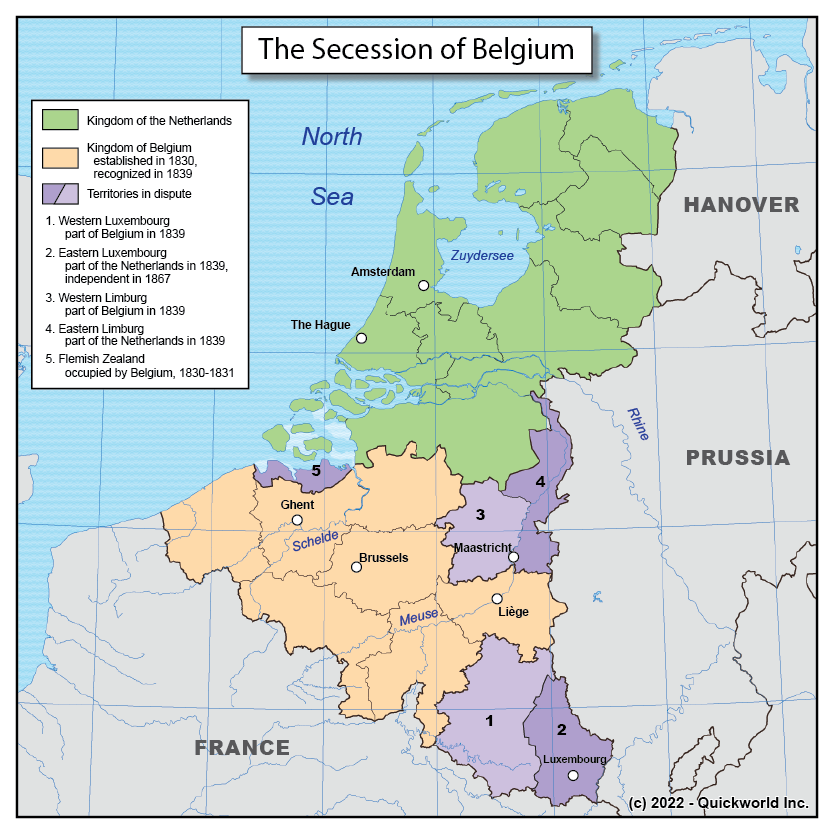Our series on Secessions takes us to Belgium, a country that unilaterally seceded from the Netherlands in 1830.
The history of the territories that compose modern Belgium is complex, although all but one were states of the Holy Roman Empire from its inception until the late 18th Century -- Flanders was part of France until 1526, then was transferred to the Empire. Being a state of the Holy Empire is not a strong definition in itself, as many major imperial powers (Austria, Prussia, Saxony...) as well as external powers (Burgundy, Spain, England, Sweden, Denmark...) exercised direct control over smaller states. As such, the majority of the states that comprise modern Belgium (Flanders, Brabant, Namur, Hainaut, Limburg and Luxembourg), known as the Southern Netherlands, were held as a group successively by Burgundy, Spain and Austria. Their history is different from the states of the Northern Netherlands, which as the United Provinces seceded from the Empire in 1588.
The French Revolution and Napoleonic years brought major disruption to political order in that region of the World, and the Congress of Vienna of 1815 awarded the Southern Netherlands, along with the Principality of Liege, to the Kingdom of the Netherlands. Historical, religious and linguistic differences left the Southern provinces frustrated with their status in the Netherlands and led to a unilateral declaration of independence as the Kingdom of Belgium in 1830. A protracted process over the status of Luxembourg and Limburg led to a compromise and formal recognition by the Netherlands in 1839.
More on Belgium
The Secession of Belgium


